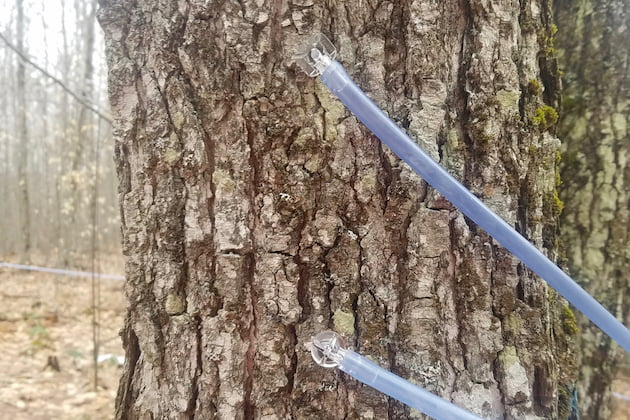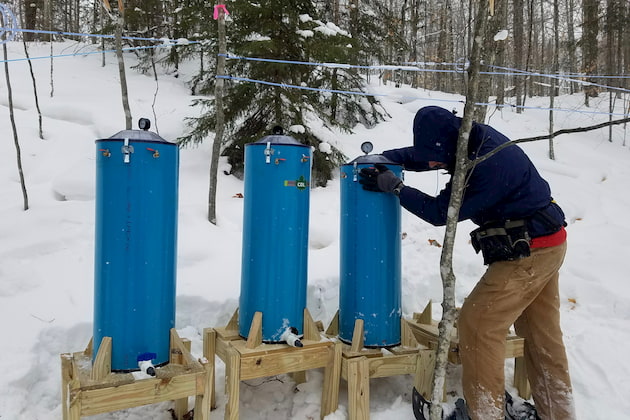Cornell Corner
Double-tapping trees might yield results, say Cornell researchers
Cornell studying second taphole trials this season
By KARA LYNN DUNN, NORTHERN NY AGRICULTURAL DEVELOPMENT PROGRAM | JUNE 15, 2020
LAKE PLACID, N.Y.—Double-tapping trees could result in 20 percent more sap.
“Recent projects that looked at the optimum time for tapping maple trees indicated that early tapping to capture early season sap runs and re-tapping later in the season could have potential to increase syrup production yields by at least 20 percent or a $6 per tap profit increase,” said Adam D. Wild, director of Cornell University’s Uihlein Maple Research Center.
This season Wild is conducted trials to test the feasibility of re-tapping maple trees during the sap season.
His research is funded by the farmer-driven Northern New York Agricultural Development Program (NNYADP), which is helping regional maple producers evaluate and add opportunities to increase sap and syrup production.
Sugarmakers shouldn’t rush out to re-drill trees just yet. Wild said the feasibility of the method needs more data, which he hopes to collect and publish this spring.
“It is not recommended to re-tap maple trees unless a distinctly clear slowdown of sap flow is observed,” Wild said. “We need more data before any clear guidelines can be determined.”
Data at the end of the current maple season will provide further answers, he said. That data will be posted later this year at www.nnyagdev.org.
Maple sap continues to flow in the northern climate where the Uihlein Maple Research Forest is located. With temperatures slowly starting to warm and a couple days projected not to freeze, Wild will soon be re-tapping the trees for this season.
With an earlier sap season this year, re-tapping maybe more advantageous.
Last year, four re-tapping treatments were tested with no statistically significant differences observed with any of the methods.
The best result was seen with the trees tapped March 1 and not re-tapped. Trees that had a second dropline and spout added near the end of the season were second best with an 18.5 percent increase in production over trees tapped at the same time but not re-tapped.
The results of past Northern New York Agricultural Development Program maple projects on the timing of tapping, the impact of tubing size for sap collection, and initiating the cloning of NNY “sweet tree” maples are posted at www.nnyagdev.org.



































